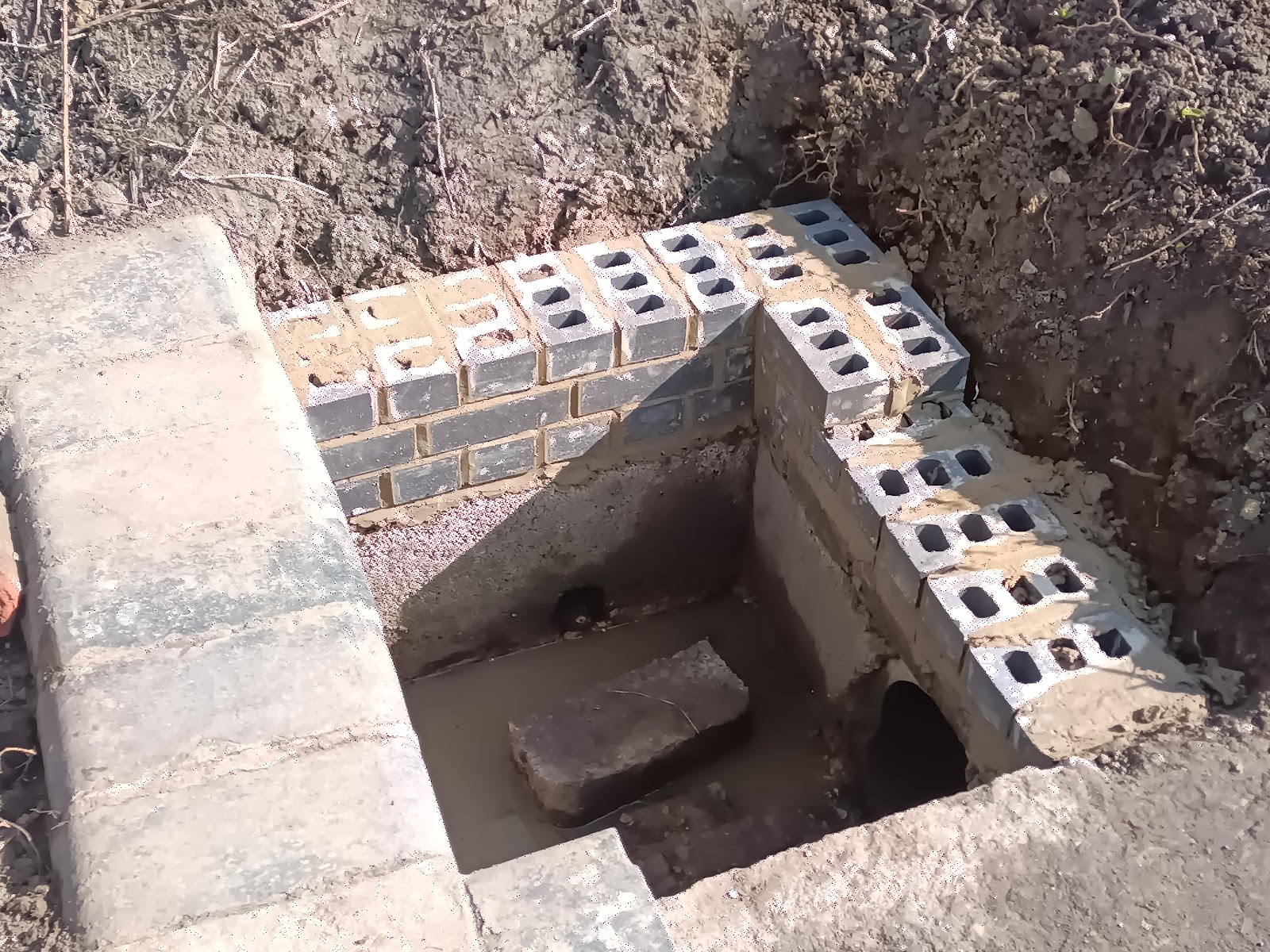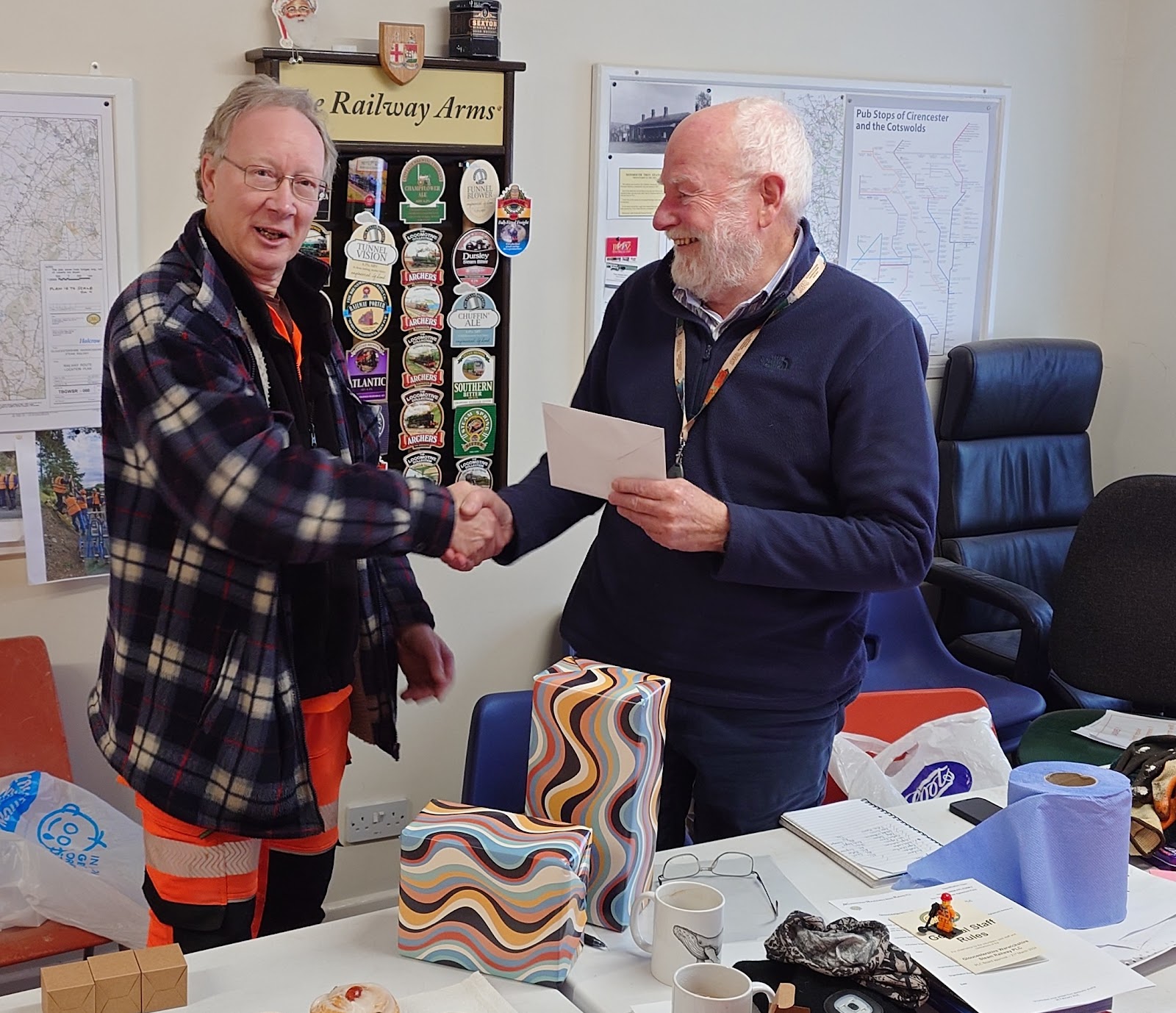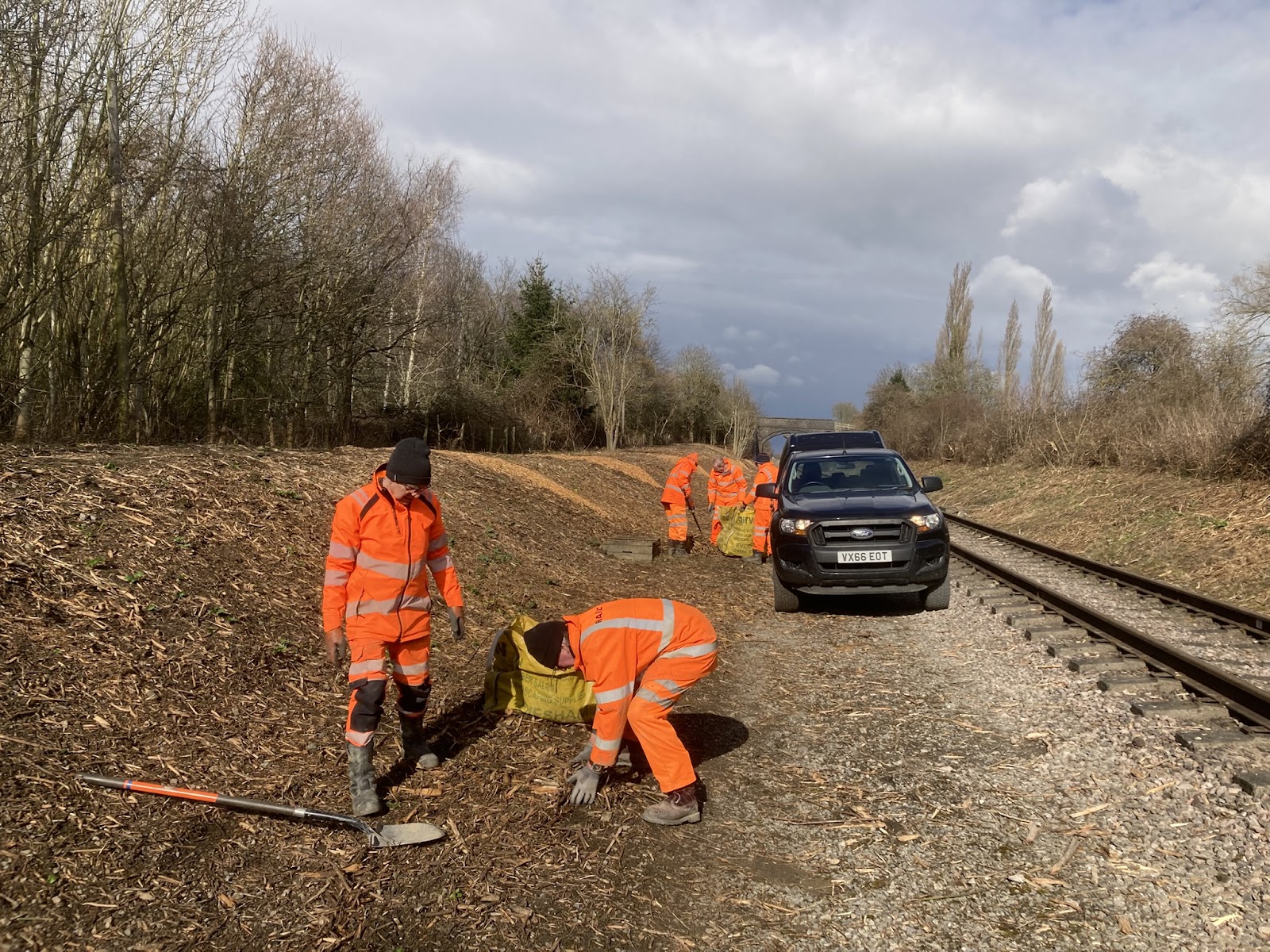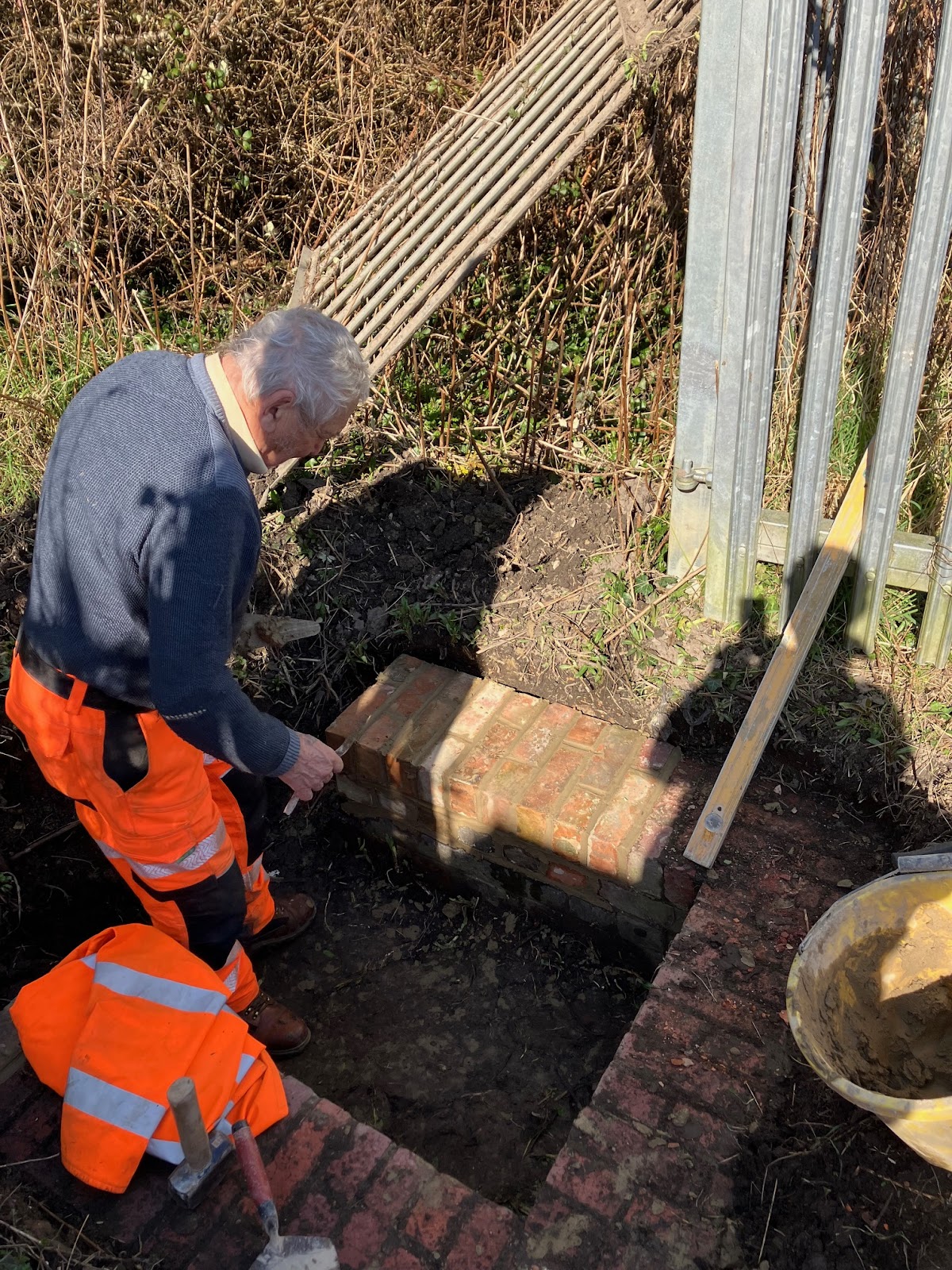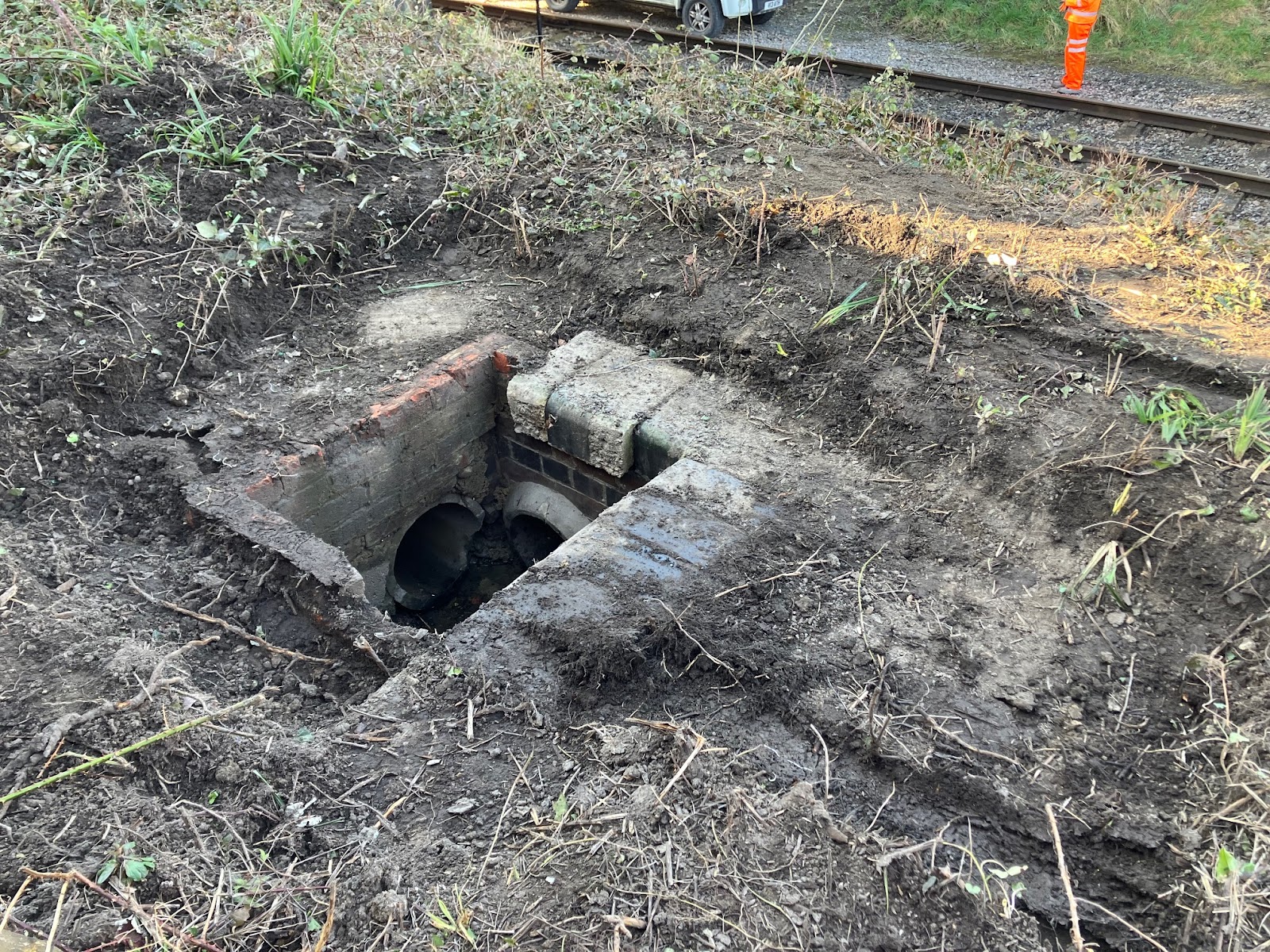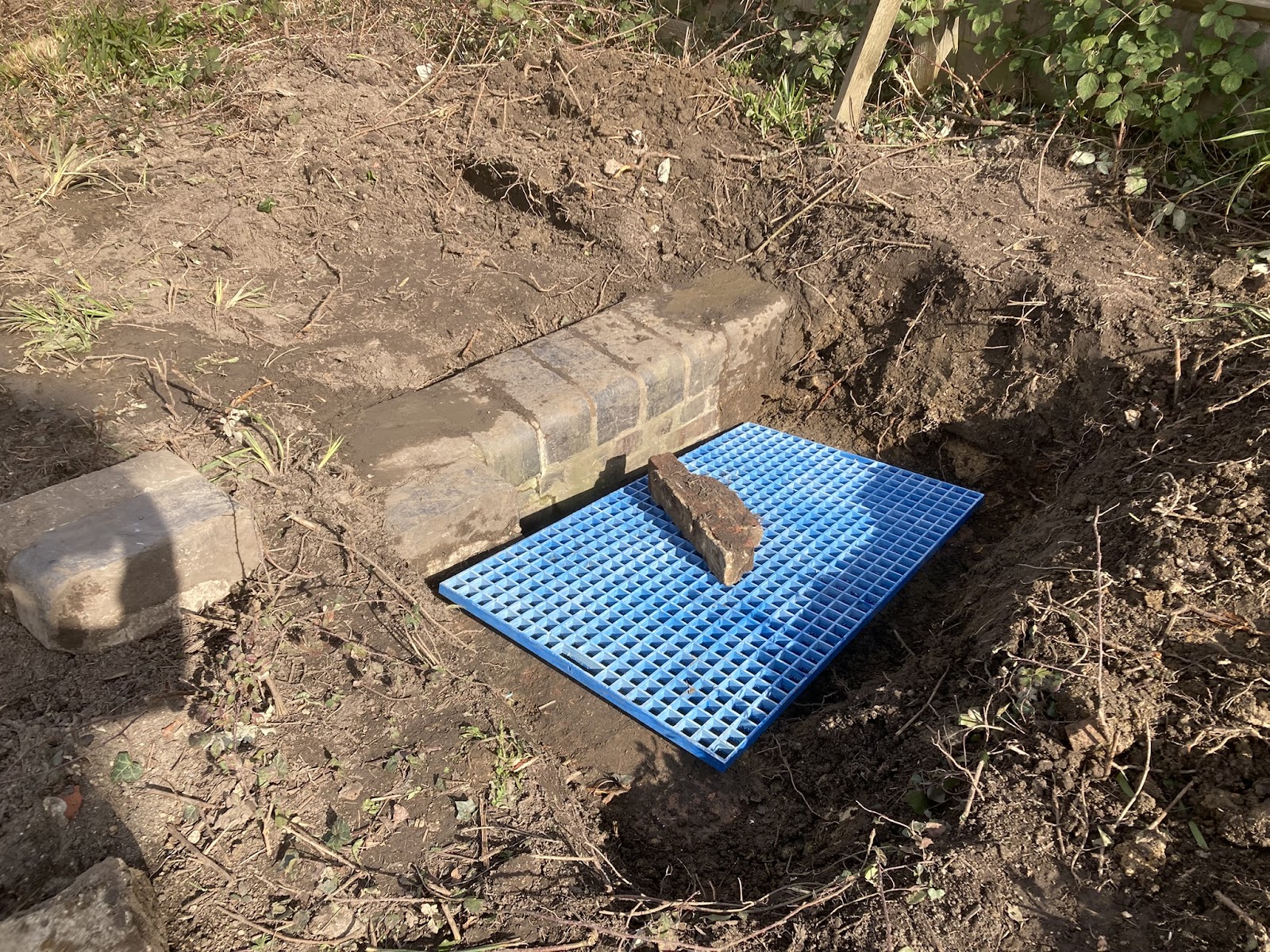Thankfully not a return to the first wave of the COVID-19 pandemic five years ago!
Tuesday 25th March
Drainage team leader Andrew accompanied Sarah Clayton, Infrastructure Manger, and contractor Tom Clarke on a site visit to Stanton cutting. The objective was to develop a plan to deal with the water run off from the fields on the down (Cotswold) side of the line between bridges 8 (B4632) and 10 (Stanton Road). The railway is in a cutting here, crossed by the Stanton Aqueduct. There is a short retaining wall just north of the aqueduct, probably installed over 50 years ago following a cutting side slip.
Thursday 27th March
Eight of the team in attendance. Well, strictly nine – as Roger was also at Winchcombe attending a First Aid course.
Six of the team departed for Two Hedges Road, leaving two at Winchcombe. In his role as fleet vehicle inspector, Jonathan, was occupied with the weekly vehicle checks. This took a bit longer than planned due to some rewiring required on the towing socket of the Ford Ranger. Ian also remained at Winchcombe to host the Railway’s PAT testing team (Mike and Alan) who were testing all of our portable electric appliances. None were failed. Ian, with the help of C&W Works Manager Stuart, also sorted out some issues with two of the brush cutters. Jonathan and Ian joined the others at Two Hedges Road before lunch.
On arrival at Two Hedges Road, the team of six split into three pairs. Nigel and Peter first attended to the washout cover of cross drain 40A in the up (Malvern) side cess. They found a spanner that both fitted the nuts and could be inserted in the gap between the cover plate and our recently added concrete surround. Then with a torque wrench they attempted to shift the bolts. Only one would move! Additionally access with the spanner to the nuts on the underside of the flange at the back of plate is very restricted. Hence we have changed our plan for this item; we will install an easily removable cover. Then when (or if) the washout lid does ever need to be removed, something more powerful than human muscle will be deployed.
Dave and Martin’s first task was to cut back some of the lineside vegetation to enable parking of vehicles a safe distance from the running line. From next week we will have passenger trains running whilst we are working – so give us a wave if you are travelling.
 |
| Parking space created allowing parking of vehicles at least 3m from the running line and with the up side cess chamber lids visible. |
Andrew and John started the main task of the day; tracing where water is percolating through the down (Cotswold) side of the cutting south of Two Hedges Road. The ultimate source of the water is a spring on Cleeve Hill, this runs in a stream which enters railway land under a footpath by the former Bonsai World site. Jonathan arrived in time to insert the first bucket of tracer dye upstream of the footpath.
 |
| Jonathan with the first bucket full of tracer dye; inlet from the stream is in the corner of the fences to the left of the gate. |
Two minutes later this emerged from the incomplete 600mm diameter pipe in the crest ditch; then after five minutes we also noted green water dripping into the cess chamber at the trackside.
 |
| Dyed water running out of the crest ditch pipes... |
 |
| ... and seeping into the cess chamber. |
Excavation around the join between the two lengths of pipe also revealed green water. So that is one source – but the flow there was much less than into the cess chamber.
 |
| Peter (l) and John excavating around the crest ditch pipe. |
After coffee break, all eight of the team then removed the second section of 600mm pipe. A prerequisite was some ditch clearance and moving two other lengths of pipe which have not been connected for several years. A check with a spirit level (actually a virtual spirit level app on a phone!) showed that the first section of pipe certainly did not have the required 1 in 80 fall – the end of it pointing slightly uphill.
 |
| Debris which had collected at the badly formed and leaking join in the two section of 600mm twinwall pipe. |
Then a pause for lunch and to start considering the options for this problem.
 |
| Not expecting it to be warm and sunny at lunchtime, we did not bring our deck chairs. Hence the use of the tail lift and bed of the Transit - and the ground. [Photo by Jonathan] |
After lunch, four of the team continued with the clearance of the crest ditch, reaching the point where the cutting transforms into an embankment and the ditch becomes a toe ditch. (It eventually runs down to cross drain 40B). The others then started the task of removing material from under the first section of pipe, with the aim to get this to the correct downward inclination. As the material surrounding the pipe is clay and ballast sized stone; this is a slow and tedious job. Not surprisingly, we will need to return next week to complete it.
 |
| Three probably now redundant lengths of 600mm twinwall, with most of the team digging around the remaining length behind. [Photo by Jonathan] |
We then added a further dose of tracer dye, this time into the manhole where the flow makes a 90 degree bend downstream of the footpath. This dye quickly flowed out of the one remaining length of pipe and then away down the crest ditch. But this time no green water was noted seeping into the cess chamber. So we think there is another leak from the stream, probably around the pipe running under the footpath and then under or around the base of the manhole. Further investigations here will be another task for next week.
Wildlife report: Certainly spring has now fully sprung. Plenty of magnolia trees in full bloom in the gardens of Gotherington and Bishops Cleeve. As an ornamental tree, there are none lineside. At Stanton on Tuesday, the first signs of plum and pear blossom were noted. The volume of birdsong also indicates spring is in full swing – a very vocal great tit was heard then easily spotted. At lunchtime, Bishop Cleeve’s resident flock of gulls was in full cry. We think these are Lesser Black-backed gulls, as they have black wing tips. Or they might be Herring gulls, who also feature black wing tips. On our departure, several robins and blackbirds moved in to take advantage of the quantity of earthworms exposed in our excavations.
 |
| Some clumps of daffodils are still in their prime. |


